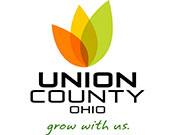 |
 |
|||||
| Home | ||||||
|
Union County Auditor  Civil War Records Civil War Records Lawyer/Physician List Lawyer/Physician List Pers. Property Tax List Pers. Property Tax List Resident Proprietors Resident Proprietors Town Property Tax List Town Property Tax List Youth Enumeration Youth EnumerationBoard of Elections  Elected Officials Elected OfficialsClerk of Courts  Civil Cases Civil Cases Court of Appeals Court of Appeals Coroner Inquests Coroner Inquests Criminal Cases Criminal Cases Dom. Relations Cases Dom. Relations Cases Executions & Liens Executions & Liens Judgments Judgments Justices of the Peace Justices of the Peace Licenses LicensesCommissioners  Annexations Annexations Ditches Ditches Vacations VacationsMiscellaneous  Children's Home Children's Home County Home County HomeProbate Court  Births Births Birth Corrections Birth Corrections Deaths Deaths Marriages Marriages Medical Certificates Medical Certificates Minister Registrations Minister Registrations Naturalizations Naturalizations Probate 1820-1851 Probate 1820-1851 Probate 1852-1960 Probate 1852-1960Recorder  Virginia Military Virginia MilitarySurveys (VMS)  Soldiers' Discharges Soldiers' DischargesSheriff  Foreign Executions Foreign Executions | Union County Minister Registration, 1820-1976
|
|||||
| Full Name List: A B C D E F G H I J K L M N O P Q R S T U V W X Y Z |
|
|
|
OR Search Any Last Name Using Soundex: |
Minister Licenses (1820-1976)
These records contain a record of minister’s granted licenses and registering in Union County their license to solemnize marriages. They show the minister, original license issuing county, date license issued, date license registered in the county and religious affiliation.
The first marriage law in Ohio was enacted in 1788, sanctioning “ministers of any religious society or congregation within the districts in which they are settled, and the society of christians called quakers in their public meetings” to legally perform marriages. Shortly after statehood on April 4, 1803, the General
Assembly passed a law “regulating marriages.” This new legislation authorized “ordained minister[s] of any religious society or congregation…and the societies of people called quakers and mennonists” to “solemnize marriages.” It, however, required those individuals to first produce “to the court of common pleas for the county” in which they resided their “credentials” of being a “regular minister.” The court was then instructed to “grant such minister a license, whereby he shall be authorized to solemnize marriage, so long as he shall continue a regular minister in such society or congregation.”
On January 11, 1822, the legislature passed “an act, to amend the act, entitled an act regulating marriages,” in three sections which set the procedures for regulating the issuance of minister licenses for nearly ninety years. It is as follows:
Sec. 1. Be it enacted by the General Assembly of the state of Ohio, That any minister of the gospel upon producing to the court of common pleas of any county within this state, in which he officiates, credentials of his being a regular ordained minister, of any religious society or congregation, shall be entitled to receive from said court a license, authorizing him to solemnize marriages within this state, so long as he shall continue a regular minister in such society or congregation.
Sec. 2. Be it further enacted, That it shall be the duty of every minister who is now, or hereafter, shall be licensed to solemnize marriage as aforesaid, to produce to the clerk of the court of common pleas, in every county in which he shall solemnize any marriage, his license so obtained, and the said clerk shall thereupon enter the name of such minister upon record as a minister of the gospel, duly authorized to solemnize marriages within this state, and shall note the county from which said license issued, for which service no charge shall be made by such clerk.
Sec. 3. And be it further enacted, That when the name of any such minister is so entered upon record, by the clerk aforesaid, such record or the certificate thereof, by the said clerk, under the seal of his office, shall be good evidence that the said minister was duly authorized to solemnize marriages agreeably to the laws of this state.
This legislation expanded the scope of the previous law and necessitated that a minister register their license in any county in which they performed marriage ceremonies. These sections were included verbatim in the comprehensive “act regulating marriages” in 1831 that overhauled and combined all the existing marriage statutes. In 1852, the portions referring to the “clerk of courts” and the “common pleas court” were replaced with the Probate Court, which had been created by the new Ohio Constitution in 1851.
These sections were later encompassed in the Revised Statutes of Ohio in sections 6386, 6387 and 6388 and later in the Ohio General Code sections 11183, 11184 and 11185. Slight revisions and modernization occurred in subsequent years starting in 1910, but the intent and overall procedures remained essentially the same as in the 1822 legislation. The creation of the Ohio Revised Code in 1953 found these sections located in Revised Code sections 3101.10, 3101.11 and 3101.12. Effective June 4, 1976, the functions of the Probate Court in issuing and recording ministers’ licenses was transferred to the Ohio Secretary of State where it remains to the present day, which also ended the continuance of the record series at the local level.